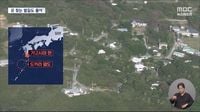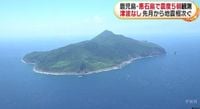Japan's Tokara Islands have been rattled by an unprecedented series of earthquakes, with over 1,000 tremors recorded in just 13 days, sparking widespread concern across the nation. The Japan Meteorological Agency (JMA) reported that on July 3, 2025, at 4:13 p.m., a particularly strong earthquake measuring magnitude 5.5 and registering a Shindo 6-lower intensity struck the region, marking the most powerful quake in recent weeks.
This magnitude 5.5 quake, which makes it difficult to stand and can cause damage such as broken wall tiles and fallen bookshelves, was felt strongly on Akusekijima, one of the Tokara Islands. The JMA quickly assured the public that no tsunami threat was posed, with the earthquake's hypocenter located approximately 20 kilometers beneath the surface. Nonetheless, the intensity and frequency of these tremors have unsettled residents and experts alike.
Since June 21, 2025, the Tokara Islands have experienced a swarm of small to moderate earthquakes, with daily counts often exceeding 100. To put this into perspective, previous active periods saw around 300 tremors over several days, but the current run has surpassed 1,000 quakes in less than two weeks, an unprecedented rate for the area. The JMA's detailed records show a range of intensities during this period: three quakes at Shindo 5-lower, twenty at Shindo 4, sixty-six at Shindo 3, 238 at Shindo 2, and 673 at Shindo 1.
Residents have endured nearly two weeks of restless nights, with many keeping emergency supplies and helmets ready by their doors in case immediate evacuation becomes necessary. One local shared, "Even a slight tremor wakes me up. I can't sleep well." The JMA has urged island inhabitants to stay prepared for rapid evacuation, emphasizing safety above all else.
Despite the ongoing seismic activity, the JMA cautions that predicting the end of these earthquakes is impossible with current scientific knowledge. Ayataka Ebita, head of the JMA's Earthquake and Tsunami Monitoring Division, stated on July 2, "You must secure your safety and be prepared to evacuate immediately," but also acknowledged, "Given the current situation, I cannot say how the earthquakes will proceed in the future. We don't know when it will end." This uncertainty has fueled anxiety among the public and authorities.
Adding to the unease are rumors circulating online and in media outlets that this earthquake swarm might be a precursor to a massive seismic event known as the Nankai Trough mega-earthquake, which historically occurs every 100 to 150 years. The Nankai Trough earthquake stretches approximately 800 kilometers from off the coast of Shizuoka Prefecture in central Japan down to Kyushu in the south and is predicted by the government to have an 80% chance of occurring within the next 30 years, with potentially devastating consequences.
However, experts specializing in the Tokara Islands' seismic activity have dismissed any direct link between the current swarm and the Nankai Trough event. Hiroshi Yakohara, an associate professor of seismology at Kagoshima University, explained that "the epicenters are in different regions," and thus the recent tremors are unrelated to the Nankai Trough mega-earthquake. Similar earthquake swarms in the Tokara Islands occurred in December 2021 and September 2023, involving two fault segments, while this time, three fault segments may be contributing to the increased activity, according to Professor Hisayoshi Yokose of Kumamoto University.
Despite reassurances, public concern remains high, especially with the re-publication of a Japanese author's book that predicted a major earthquake on July 5, 2025. This prediction, coupled with the ongoing tremors, has intensified fears both within Japan and internationally. In Hong Kong, for instance, visitor numbers to Japan dropped by 11.2% in May compared to the previous year, a decline attributed to these earthquake rumors. Furthermore, some airlines, like Hong Kong Greater Bay Airlines, have suspended flights connecting Hong Kong to Japanese destinations such as Tottori and Tokushima starting September 1, citing safety concerns linked to the earthquake speculations.
Prime Minister Fumio Kishida convened an emergency meeting following the latest quake, emphasizing the government's commitment to prioritizing human life and ensuring timely dissemination of information. The administration is also revising its disaster prevention plans for the first time in 11 years to better prepare for potential large-scale disasters.
While the recent swarm has caused structural damage such as landslides and cracking floors, no casualties have been reported so far. The JMA continues to monitor the situation closely, issuing warnings about possible rockfalls and cliff collapses in areas experiencing strong shaking.
Japan's public broadcaster NHK interrupted regular programming to report the earthquake, underscoring the seriousness of the situation. The ongoing seismic unrest has left many residents on edge, grappling with the unpredictability of nature and the looming possibility of a major quake.
In the face of this uncertainty, experts stress the importance of preparedness and caution against succumbing to rumors or unfounded predictions. As Ayataka Ebita firmly stated, "Currently, earthquake prediction is impossible with scientific technology." The JMA's focus remains on closely observing seismic activity and ensuring the safety of residents through clear communication and readiness measures.
As the Tokara Islands continue to experience this extraordinary sequence of earthquakes, the nation watches anxiously, hoping for the tremors to subside while bracing for whatever may come next.


